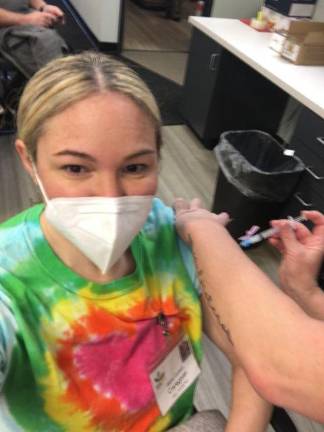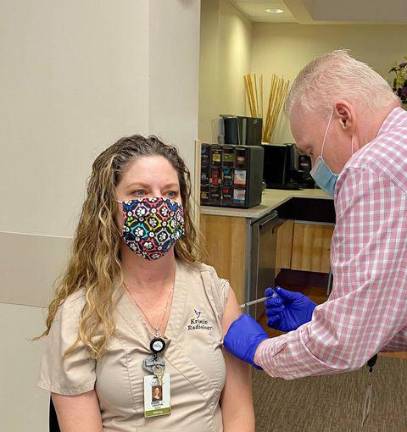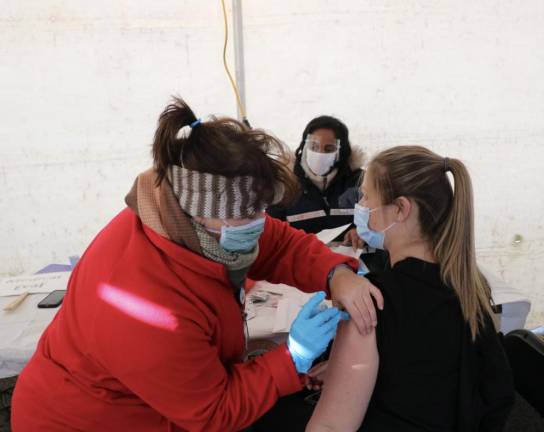COVID-19 vaccine eligibility differs, depending on your state
As states continue to update their vaccination plans, copious amounts of information is released daily - some of which can be conflicting.



With COVID-19 vaccinations underway for healthcare workers, there is a lot of information that is still up in the air that can be confusing. With two different vaccinations, the phases in which to distribute them, and the differentiating state protocol, it is a massive amount of information for the general population to sift through. Here is the current information about your state’s guidelines on COVID vaccinations.
Phases
NEW YORK
New York State has a vaccine distribution plan separated into 5 phases. Currently, NY is in Phase 1 of 5.
Phase 1:
· Health care workers (clinical and non-clinical) in patient care settings (ICU, ED, EMS top priority)
· Long-term care facility (LTCF) workers who regularly interact with residents
· Most at risk long-term care facility patients
Phase 2:
· First responders (fire, police, national guard)
· Teachers/school staff (in-person instruction), childcare providers
· Public Health workers
· Other essential frontline workers that regularly interact with public (pharmacists, grocery store workers, transit employees, etc.) or maintain critical infrastructure
· Other long-term care patients and those living in other congregate settings
· Individuals in general population deemed particularly high risk due to comorbidities and health conditions
Phase 3:
· Individuals over 65
· Individuals under 65 with high-risk comorbidities and health conditions
Phase 4:
· All other essential workers
Phase 5:
· Healthy adults and children
If you are unsure of your COVID vaccine eligibility, visit https://am-i-eligible-qa.covid19vaccine.health.ny.gov and fill out the eligibility form.
NEW JERSEY
New Jersey will follow the COVID vaccine phases released by the CDC: Phase 1A, Phase 1B, Phase 1C, and Phase 2. Currently, NJ is in Phase 1A.
Phase 1A:
· Paid and unpaid persons serving in health care settings who have the potential for direct or indirect exposure to patients or infectious materials
· Residents and staff of long-term congregate settings
Phase 1B:
· Sworn law enforcement personnel/fire professionals, which includes but is not limited to police officers and paid and unpaid firefighters
· 75 years and older are also included in Phase 1B.
· The remainder of the essential workers and other high-risk individuals included in Phase 1B will be announced shortly.
Once vaccine availability expands, vaccination will advance to Phase 1C and then Phase 2.
Phase 1C:
· Other essential workers, adults 65 and over, and persons aged 16-64 with medical conditions that increase the risk for severe COVID-19 as defined by the CDC.
· Defining categories of individuals to include in 1C is currently in process and will be finalized in early 2021.
Phase 2:
· General population
PENNSYLVANIA
Pennsylvania’s will be breaking vaccine distribution into 4 phases: Phase 1A, Phase 1B, Phase 2, and Phase 3. Currently, Pennsylvania is in Phase 1B.
Phase 1A:
· Healthcare personnel
· Long-term care facilities (LTCFs)
Phase 1B:
· Law enforcement
· Fire/rescue personnel
· PA National Guard responders not included otherwise in Phase 1A
· Older Adult Protective Services, Adult Protective Services, Child Protective Services
· Critical workers
o Critical Manufacturing Sector
- People who manufacture medical supplies, PPE, pharmaceuticals, vaccines
- People who manufacture other essential products
o Emergency Services Sector
- Field workers with direct public exposure
- Volunteer response organization field personnel
- Supportive housing field personnel
o Energy Sector
- People who conduct home/business visits for electrical assessments and repairs, gas supply assessments and repairs
- Oil refinery workers, others in petrochemical processing and distribution
o Food and Agriculture Sector
- Meat processing and other food processing facility workers
o Workers serving people in congregate settings not otherwise included in Phase 1A
- Correctional facilities/juvenile justice facilities
- Homeless shelters
- Domestic violence/rape crisis shelters
- Office of Children, Youth, and Families Child Residential Facilities
o Nuclear Reactors, Materials, and Waste Sector
- Onsite technical personnel, emergency responders
o Transportation Systems Sector
- Drivers of high occupancy vehicles (more than 6) or drivers participating in medically necessary services
- TSA workers or Airport/train security
- Medical Assistance Transportation Program Drivers
o Water and Wastewater Systems Sector
- Field workers making assessments and repairs in the community
- Wastewater treatment facilities technicians o Emergency responders
o Education
- Teachers, school staff working directly with students
o Employees caring for Children or Adults in Early Childhood and Adult Day Programs
- Child Care
o Part Day School Age Programs
- Home Visiting Programs
- Early Intervention staff not otherwise included in 1A
o Other high-risk services/activities
- Environmental cleaning of patient care areas
- Laboratory processing of COVID-19 specimens
- Mortuary care for deceased COVID persons
Phase 2
· Critical Workers who were not yet vaccinated
· People with high-risk conditions
· People with vaccine access challenges
Phase 3
· General population
Where vaccines will be administered
• In Facility (hospital, long-term care facilities, etc.)
• FQHCs/Community health centers/Rural health clinics
• Primary care provider physician offices (PCP)
• Commercial/Independent Pharmacies
• Local Health Departments
• Mass vaccination point of dispensing sites (MVS/PODs)
• Mobile vaccination units (push PODs), targeted to smaller congregate living facilities
• Other VASs include businesses, schools, colleges and universities, homeless shelters, correction facilities and sites where target populations gather (i.e. senior centers, social service offices, food pantries, etc.
To look at your state’s official COVID vaccine plan, visit the following websites for ongoing updates:
New York: https://www.governor.ny.gov/sites/governor.ny.gov/files/atoms/files/NYS_COVID_Vaccination_Program_Book_10.16.20_FINAL.pdf
New Jersey: https://www.nj.gov/health/cd/documents/topics/NCOV/VaccinePhasesFactSheet.pdf
Pennsylvania: https://www.health.pa.gov/topics/Documents/Programs/Immunizations/Vaccine%20Plan%20V.3%20FINAL.pdf